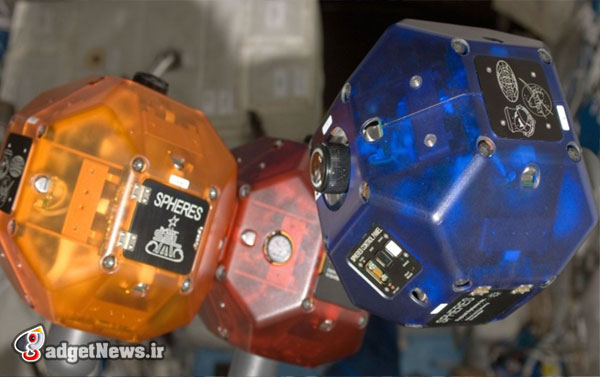
به لطف پروژه تانگو گوگل، قرار است روبات آزمایشی ناسا یک بروز رسانی اساسی را شاهد باشد. دو کمپانی گوگل و ناسا در حال همکاری هستند تا تلفن مربوط به پروژه تانگو گوگل که خود در مرحله آزمایشی و توسعه است را در دل روباتهای رنگی ناسا قرار دهند و به ایستگاه فضایی ارسال کنند.
در حال حاضر روبات SPHERES ناسا قادر است ناوبری ابتدایی این روبات را در ایستگاه فضایی مدیریت کند. از آنجایی که تلفن تانگو گوگل از سنسورهای متنوعی بهره میبرد میتواند توان SPHERES را بهبود بخشد.
تری فانگ مدیر ارشد گروه روباتهای هوشمند ناسا در باره استفاده تانگو گوگل گفته است:
این یک ارتقاء معمولی نیست. ما قرار است فناوری یک محصول فوقالعاده را سفارشی کنیم تا بتوانیم به پاسخ پرسشهایی همچون، روباتها چطور زندگی انسان را تحت تاثیر قرار خواهند داد و چگونه به ما در زندگی یا کار بهتر کمک خواهند کرد، برسیم.
گوگل و ناسا پیش از این آزمایشاتی را بر روی روبات SPHERES و تانگو در جاذبه صفر داشتهاند. در واقع همکاری دو شرکت از تابستان گذشته آغاز شده و قرار است تا اواخر امسال، محصول نهایی آنها آماده شود.
روباتهای SPHERES قادر خواهند بود مسیر خود را به کمک نیروی ایجاد شده توسط سوخت گازی به سمت ایستگاه فضایی بپیمایند. ناسا تا به حال آزمایشهای مختلفی را بر روی این روبات ارزان قیمت که توسط یک تلفن هوشمند کنترل میشود انجام داده است و امیدوار است این روبات بتواند به فضانواردان در تعمیرات اضطراری و سرویسهای اساسی کمک کند. ناسا چشماندازی بزرگی را برای این پروژه متصور است و امیدوار است به زودی بتواند از SPHERES در پروژههای مهم و اساسی بهره ببرد.
منبع : theverge
NASA sending Google's Project Tango smartphone to space to improve flying robots
An experimental NASA robot could get a big upgrade thanks to Google. The two parties have been working together to integrate Google's Project Tango smartphone prototype — which can detect and map the world around it using a series of sensors — onto NASA's SPHERES — brightly colored, volleyball-sized robots designed to float around the International Space Station and assist astronauts. Right now, the SPHERES can perform basic navigation inside of a limited section of the ISS by using ultrasound and detecting infrared light, but using Tango's more detailed detection methods, NASA hopes to let the robots explore more of the station and navigate entirely on their own.
"This is no ordinary upgrade," Terry Fong, director of the Intelligent Robotics Group at NASA's Ames Research Center, says in a statement. "We’ve customized cutting-edge commercial technologies to help us answer questions like: How can robots help humans live and work in space? What will happen when humans explore other worlds with robots by their side? Can we make this happen sooner, rather than later?" Google and NASA have already conducted tests to see how SPHERES and Tango behave in a zero-gravity environment. The partnership began last summer, and a Tango smartphone should be sent up later this year.
The SPHERES are able to navigate the station by propelling themselves with gas thrusters. So far, they've been used to move objects during scientific tests and to experiment with techniques that could allow the robots to assist astronauts with emergency repairs and basic servicing. NASA has a much bigger vision for them in the long run though: while they aren't even built to leave the ISS right now, NASA imagines that one day similar robots could fly through space to inspect the exterior of the space station or some other vehicle that they've been along for the ride with.
Interestingly enough, this isn't the first Google smartphone to be sent up to the ISS and strapped to SPHERES: in 2011, a Nexus S was sent up too, also with the intention of augmenting NASA's SPHERES with more sensors.
 گجت نیوز آخرین اخبار تکنولوژی، علم و خودرو
گجت نیوز آخرین اخبار تکنولوژی، علم و خودرو 





